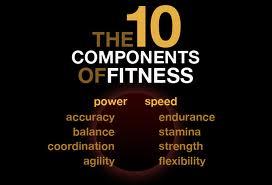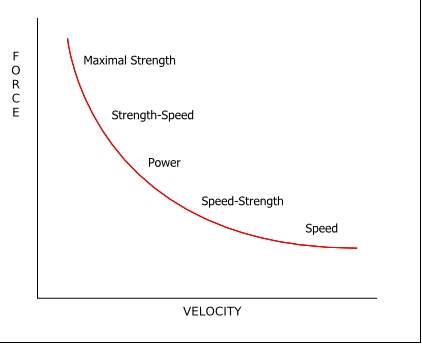Workouts vs. Programming
by Erik Castiglione
At the start of this quarantine, we sent out a list of 75 bodyweight WODs, free of charge. But, we have kept our Home WOD program hidden from the public, and only accessible to members with active memberships. Why? What is the difference? Well, a workout is a single bout of exercise. A program is a series of workouts put together to achieve specific results. They come in numerous forms depending on the goal of the user – Couch to 5k is a running program, 5/3/1 is a powerlifting/strength program, and CrossFit is a general strength and conditioning program.
Programming is an often discussed and hotly debated subject amongst affiliate owners. It is also, unfortunately, only rudimentarily covered in CrossFit coaching certifications. I may be biased since I am passionate about programming and have spent the last 9 years studying it, but I honestly believe that programming is a huge factor in separating a good CrossFit affiliate from a great one.
CrossFit is defined as “constantly varied functional movements executed at high intensity.” CrossFit then goes on further to define functional movements, but the part I would like to focus on is “constantly varied.” To many coaches, constantly varied = random. And, there are varying degrees of randomness. A truly random program could potentially see you perform “Murph” two days in a row. Most gyms eschew true randomness (thankfully!). They at least look at movements performed during the week and attempt to avoid duplication. Push-ups appeared on Monday? Okay, no more push-ups this week. Some affiliates consider the length of certain workouts as well, and mix long, medium, and short duration workouts. Putting this all together is a good start, but it is not enough. It still allows for the coach to plug in a workout that he picked from another gym because it has movements in it that have not yet been performed that week. It is a collection of workouts, rather than a series. And therein lies the most important distinction.
The workout collection approach, henceforth known as the “random task” approach, often ignores progression over time. It focuses on the here and now. Are members left in a puddle of sweat after this WOD? Did they perceive it to be a “good workout?” (how do we even quantify that???). And the thought process pretty much stops there, rather than taking the long view. For example, if I constantly use a 135 lb bar for deadlifts in a WOD, and I do not train to improve my strength, how will I ever get to an Rx weight for “Diane” (225 lbs)? It is possible, but it will take a long time, especially if I am still working on mastering my deadlift form.
Programming for CrossFit is difficult because we train so many different physical attributes. We want to improve your maximal strength, and your aerobic conditioning. We want to improve your muscular stamina, and help you lean out. It is quite easy to throw all of this into a single week, overload clients, and cause them to burn out or worse, get injured. There is a reason many gyms outsource their programming to other coaches or implement ready-made programs like NC Fit or CF New England’s programming.
I refuse to do that. Cookie cutter programs do not consider the fitness level of our membership at CrossFit Relentless. They do not consider the equipment and space restrictions that we have (some coaches erroneously argue that program design is SOLELY an exercise in logistics. It is a contributing factor, not the prime consideration.). They do not account for the fact that everyone has different schedules. If every Monday is a squat day, and you can never make a Monday class, you will not squat. This is not acceptable to me.
So, how do we balance everything? At CrossFit Relentless, we implement strength cycles. You spend most of your time building strength, through various sets and reps. We use speed days, heavy days, and volume days, to develop multiple components of strength. And then, we test our lifts at the end of the cycle, rather than throwing in a random max effort day.
Our metcons each have a different goal as well. We mix sprints, intervals, steady state cardio, pacing workouts, and accessory work days. We go beyond a list of movements and time domains, and instead focus on WHAT we want to train, and how taxing it is to recover from that modality. By strategically spacing these modalities throughout a given week, month, and cycle, we ensure that you will have time to recover without overtraining, regardless of how many days you attend. Theoretically, you could attend 7 days per week and make solid progress (external factors like sleep, life stress, and nutrition have a huge influence on this). I am living proof of that during this quarantine – no rest days, no barbells, 100% compliance, and boom!
We treat max effort lifts and named workouts as tests, rather than a staple of fitness. We prepare you for every Hero and Girl workout, so that you can improve from year to year and have a measure of that improvement. Our coaching staff understands the long-game, and conveys that to you, the members. Coaching is more than just correcting form; it is ensuring that you get the benefit of the workout by scaling appropriately. This is why we charged for the Home WOD program, but not the collection of the bodyweight movements. You are paying for coaching, guidance, and expertise. After all, programming is an art, based on science. How we do it is what sets us apart from other gyms. If you would like to learn about specific methods, I’m happy to sit you down for 6 hours and talk your ears off. In all seriousness, we will be discussing various aspects of programming in the coming weeks. Enjoy!


